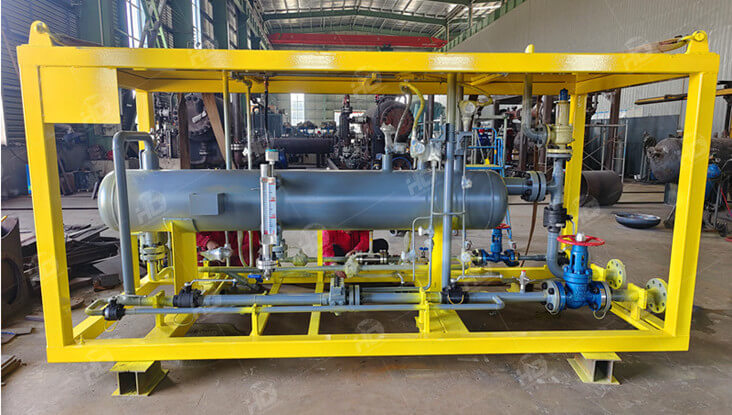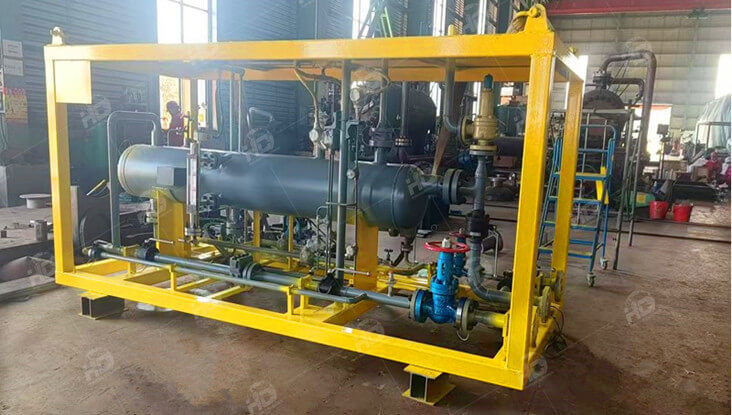What Is a Horizontal Gas-Liquid Separator? Structure, Working Principle & Applications Explained
A horizontal gas-liquid separator is a key piece of equipment in oil and gas surface production systems, especially when handling two-phase flow where gas and liquid need to be separated efficiently before further processing or measurement. At HC, we are currently building a horizontal two-phase separator for a domestic project, and we’ve noticed many clients are curious about what’s actually inside the vessel and how it performs its function in real-time production environments.
In essence, the separator uses gravity to separate the two phases based on their different densities. The incoming mixture—typically wellhead fluid from a gas well—enters the vessel at high velocity. As it flows in, it first hits an inlet device, often a diverter or deflector plate, which immediately reduces the momentum and initiates the primary phase separation by forcing the heavier liquid droplets to fall out of the gas stream. From there, the mixture continues through the main body of the vessel, where the gas travels along the upper section and the liquid settles at the bottom.

The interior of a horizontal gas-liquid separator isn’t as complex as it might seem from the outside, but every component plays a crucial role. After the initial separation at the inlet, the gas travels through a gravity settling section where finer liquid droplets are given time and space to fall out of the gas stream. Before exiting the vessel, the gas passes through a mist eliminator—usually a mesh pad or vane-type demister—that captures any remaining mist or entrained liquid. This ensures that the gas leaving the separator meets the required dryness standards, especially important if it’s being sent to a compressor or pipeline. On the liquid side, the collected liquid is drained via a level-controlled outlet. Depending on the process requirements, level controllers, safety valves, and sight glasses are also incorporated to maintain safe and stable operation.
Compared to vertical separators, horizontal gas-liquid separators offer greater surface area and are better suited for high liquid volumes and slugging conditions. They are commonly deployed in both onshore and offshore operations, including well testing, gas production facilities, and processing stations where gas has to be separated from formation water or condensate before metering or dehydration.

At HC, we take a tailored approach to each separator we design. Factors like flow rate, operating pressure, gas-to-liquid ratio, and whether the gas contains corrosive elements like H₂S all influence how we size the vessel and select materials and internal components. Our design and fabrication teams work closely with clients to ensure that each separator integrates seamlessly into their overall system and delivers stable, efficient, and safe performance under real field conditions.
In recent years, we've seen more customers asking not only about separation efficiency, but also about long-term reliability, maintainability, and how quickly a unit can be delivered and installed. That’s why we’ve invested heavily in engineering design, in-house manufacturing capacity, and quality control processes. For clients who are looking for a proven solution to handle two-phase flow, especially in gas-heavy production scenarios, our horizontal gas-liquid separators provide both performance and peace of mind.
If you’re currently evaluating options for gas-liquid separation or need a custom-built unit for your next project, our team at HC is ready to support you from design through delivery.
